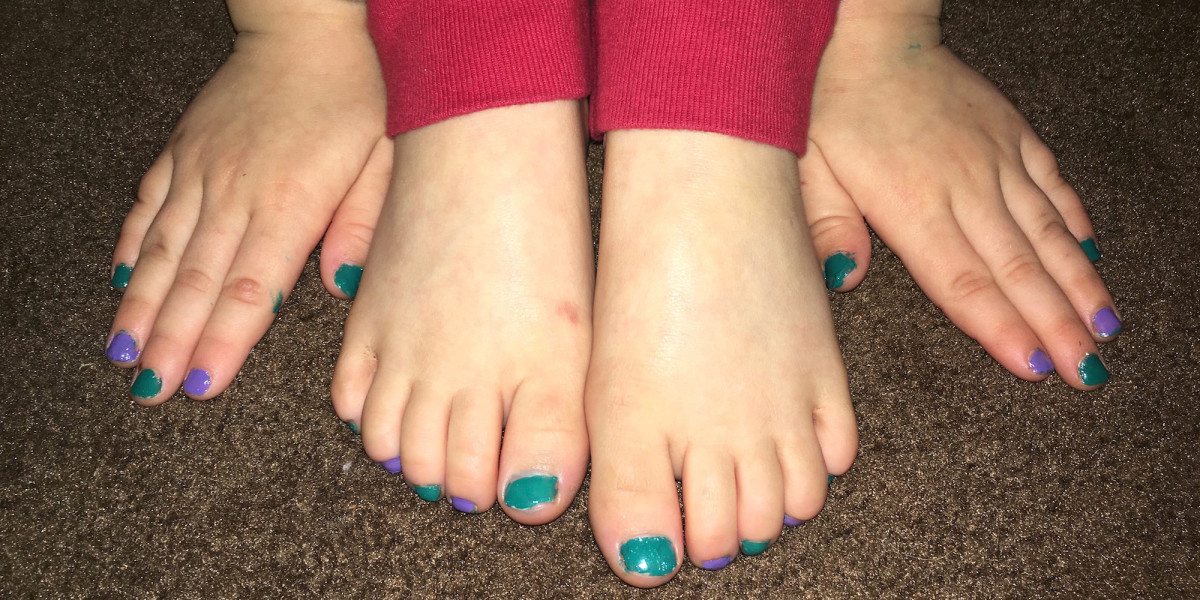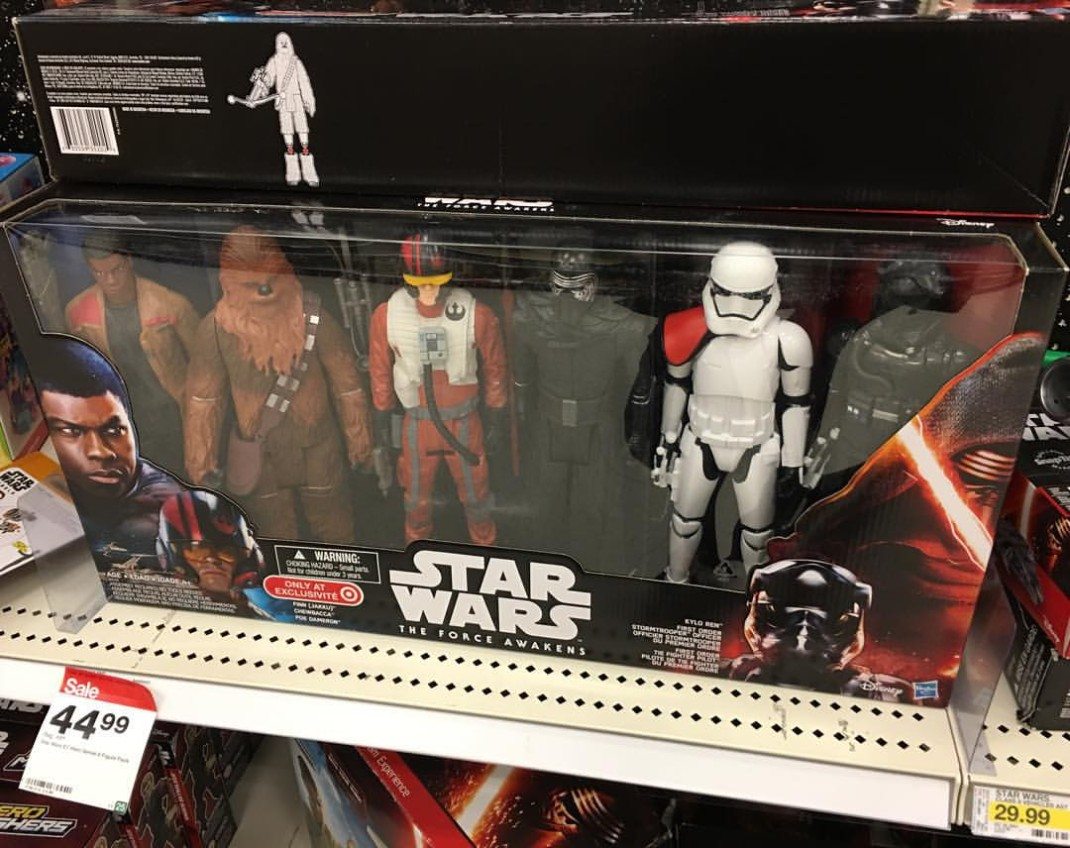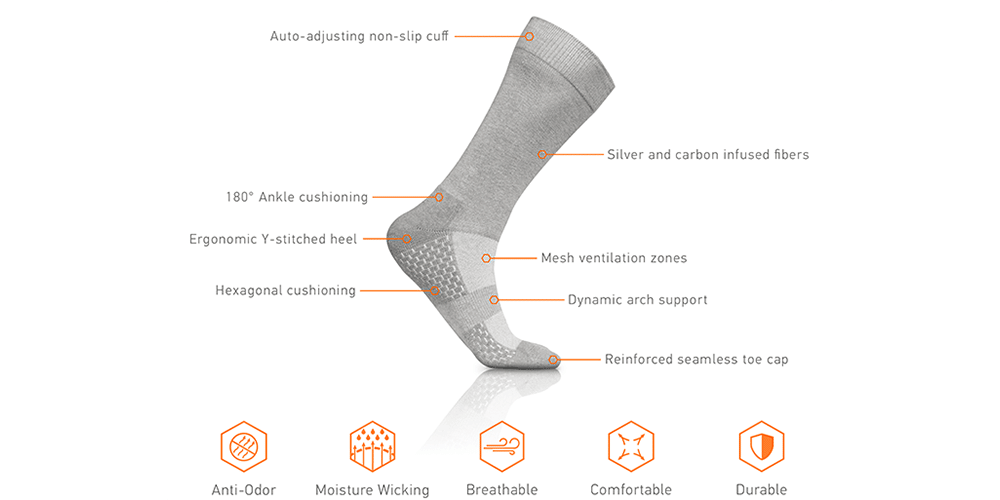
As a foster parent with more than 20 little ones on my résumé and a full-time parent of five, I can tell you I have painted a lot of nails. When I first got asked to help paint toddler-nails I laughed out loud; there’s no way these kids will sit still long enough to get their nails painted! Something magical happens, though, when you break out the brightly colored bottles and ask to hold their little hands. Silence. Stillness. Every kid I’ve ever had has absolutely loved getting their nails painted. It didn’t matter whether they were boys or girls, hyperactive, or too-shy-to-talk–I have never had a single kid in my home that didn’t appreciate the attention they got during nail painting.
For the longest time, technique didn’t matter. I worried about the kids sitting still and having the patience to wait for polish to dry, but I had no idea how hard it would be for me! In the beginning, it was a real struggle for me to relax and focus on doing a good job. I think it was the combination of me thinking this was “Parenting Time” when I needed to have my attention on everything around me and me not taking nail painting as seriously as I took my other hobbies.
When I am by myself and have the opportunity to relax with a soldering iron or a lathe I can be incredibly focused (some would say too-focused) and meticulous in my work, but my nail painting has always been a sloppy, goopy affair. Luckily, toddlers rarely care about the quality of a pedicure. Now that my own children are getting older, however, my once laudable skills as a nail painting dad are no longer meeting expectations. My ten-year-old daughter was excited to let me do her nails this morning and, as excited as I was for a moment, my heart dropped when she told me I didn’t have to worry about being sloppy because she had two weeks off of school.
This is clearly a challenge that is going to require me to bring all of my geek powers to bear. First and foremost, let’s take a look at products. I don’t know about the rest of you, but our collection of nail polish is a mishmash of cartoon character branded mini-bottles, dollar-store stocking-stuffers, and a couple bottles of The Good Stuff that must surely have been borrowed from someone else’s collection at one time or another. There is a noticeable difference in the quality of the polishes from an application, durability, and shelf-life perspective, but how much of that is tied up simply in the cost of the products and how much is a result of potentially life-altering toxic chemicals mixed in? A little background reading on nail polish chemistry seemed to be in order, and here is a very brief rundown of what I have found so far.
The Toxic Trio, or “Throw Away All of Your Old Nail Polish”
Tolulene, formaldehyde, and dibutyl phthalate (also referred to as DBP) were three common ingredients found in many nail polishes as recently as 2005. I’m happy to see that things seem to be getting much better. There is a host of “3 free” nail polishes that are being marketed, and most of the big manufacturers have greatly reduced their reliance on these three chemicals. While tolulene may give nail polish a smooth finish and help tiny nails dry more quickly, I’m not too keen on the kidney, liver, and reproductive damage that accompanies exposure to the sweet smelling chemical. Even though things are getting better it seems that some companies might be pushing the envelope a bit in their marketing even today.
In 2012, the California Department of Toxic Substances Control did a limited test of some nail polishes that made various claims about their use of the chemical in the toxic trio; results aren’t terribly encouraging. Only two out of seven brands tested which claimed to be “3 free” were actually free of all three chemicals. Several others made similar claims and tested positive for one or more of the chemicals, and at least one brand actually had a higher concentration of DBP than was typically found in older formulations that made no such claim. Ugh. What’s a concerned dad to do?
There is a searchable database published by The Environmental Working Group, but they appear to have a controversial reputation when it comes to alerts about hazardous chemicals in your life. Still, if you’re interested in checking up on your collection, it couldn’t hurt to take a peek. The database couldn’t find the Pop-Arazzi “Head Over Teals” that I put on my son this morning, but the CVS website has an ingredients list and none of the above-mentioned chemicals seem to be on it. It also didn’t find any results when I searched for “Julep Hazel” or “tiny bottle with a cupcake on it.” (Though Google directed me to Pinterest when I searched there and apparently there are an awful lot of people making nail polish shaped cupcakes out there.)
Interestingly, the bottle from Julep did have a label on it indicating it was “5-Free” and vegan. “5-Free” is apparently a relatively new marketing term that indicates that, in addition to being free of the toxic trio, the nail polish is also free of formaldehyde resin (a derivative of formaldehyde that is less toxic than the original but is apparently a common allergen) and camphor. I did find a bottle of Revlon ColorStay Gel Envy “Queen of Hearts” in the EWG database which listed it as a relatively low hazard, 3 on a scale of 1 (least hazardous) to 10 (most hazardous). I’m not entirely sure what to make of the results from the EWG database, but if nothing else it does contain a detailed ingredient list and gives some information about allergies and other concerns.
There are a few brands which seem to be universally recommended by safety-first nail polish gurus online. If you’re like me and you’re considering tossing everything and starting over it might be a good idea to focus on a few brands that are formulated especially for kids. One very popular brand is Piggy Paint. It’s easy to find in the EWG database and received an overall hazard rating of 1 (least hazardous) and a 1 in nearly every category. Piggy Paint seems to have a lot of fun colors and appears to be available just about everywhere in the $8-$10 a bottle range.
Suncoat Girl is a bit cheaper at $7.99 per bottle and also comes in with a hazard rating of 1 from EWG. Boasting that it is a peel-off polish with no remover needed definitely bumps it up high on my “must try” list, despite the frustratingly sexist name and packaging. My kids were less than impressed with the color selection of the Suncoat Girl brand as well. It features lots of muted hues and nothing to speak of in the electric, eye-popping range.
Hopscotch Kids is a brand that gets quite a bit of praise, but I can’t get much information about colors and availability. Amazon has bottles for sale, but Hopscotch Kids’ own website doesn’t seem to list any actual merchandise for sale. I wasn’t able to find them in the EWG database, but they advertise on their site that they received the safest possible rating in the EWG database.
There are two brands that get a lot of praise in the media but don’t rate as safe as Piggy Paint, Suncoat Girl, and Hopscotch Kids in the EWG Database. Keeki comes in at a 1-2 with a couple of menacing cancer warnings. Keeki did receive an official rating of “OOOOOOHHHHHHH those are pretty” from my twins, though, so I’m probably going to be adding a few to our new collection.
The other brand that I saw a lot of talk about but which doesn’t do well in the EWG database is PRITI NYC, coming in with a hazard rating of 3. I’m hesitant to even include them on the list, but they do have some dazzling colors and their rating seems to come from the presence of the somewhat controversial chemical Benzophenone which may be related to endocrine problems. From what I’ve read, it’s debatable whether the presence of this chemical in nail polish really poses a risk, but I’m certainly not qualified to comment on it.
Here is an article referencing a joint Duke-EWG study on the presence of this chemical in nail polishes and possible long-term effects. At $9 a bottle, there may be a lot of other options, but the PRITI colors are magnificent.
Finally, Acquarella is another brand which received a 1 in the EWG database and is highly praised for its wide array of colors. While not directly marketed at kids and a little more pricey than the other brands I’ve mentioned, they do seem to have every color I’ve ever seen (and quite a few I hadn’t). Expect to pay about $16 a bottle for this one, though. Wowzers! One big thing that Acquarella has going for it is their own water-based nail polish remover. Specifically formulated to remove the Acquarella brand of polishes without the use of acetone or other common chemicals found in commercial nail polish removers, it addresses one of the bigger concerns I have when I’m working on little nails.
Nail polish remover, or “Hazardous Industrial Chemical in a Tiny Pink Bottle”
The primary ingredient in most nail polish removers is acetone. That is to say, every bottle of nail polish remover I have ever bought and every bottle currently in my house is made up mostly of acetone. All things considered, acetone is pretty low on the list of “Chemicals Which Will Mess You Up,” but it is poisonous; a few tablespoons is enough to kill a child if they drink it.
Fortunately, it would be almost impossible to drink a few tablespoons of acetone on accident because it will burn your soft tissue like the fire of a thousand suns. Unfortunately, if you smear it all over a child’s fingernails it’s incredibly likely they are going to wind up with it in their eyes or mouth at some point and that is going to make for an absolutely miserable couple of hours. Breathing too much can cause similar problems and it is incredibly volatile, so make sure you are in a well-ventilated room when you use it. It’s also incredibly flammable.
There are non-acetone-based removers available that supposedly work pretty well, but they replace the acetone with ethyl acetate or a lovely sounding chemical called methyl ethyl keytone. Still poisonous, still flammable. Not as good at taking off nail polish, so you’re probably going to be using more of it. Ugh, are we ready to find a different way to take off nail polish yet?
Much like the product sold by Acquarella, there are a few organic, water-based nail polish removers that are marketed as safer alternatives to acetone. From most of the comments on Amazon, beauty forums, and (most humorously) YouTube, my takeaway is they don’t work very well. I’m interested to find out whether the Acquarella product works well since it was designed specifically to remove their nail polish, but, in general, the consensus seems to be not to waste your money.
Quite a few sites recommend soaking painted nails in warm, soapy water and then either scrubbing with a toothbrush or scraping with a cuticle tool to remove the polish. Another interesting trick I’ve read about was painting the nail first with white glue and then, after it dries, painting over the layer of glue with your nail polish. The idea here is that you can then get soak the nail to soften up the glue and then pull it all right off. Both of these ideas seem interesting but don’t really help me with one of my biggest problems–what to do when you get nail polish on the skin?
The consensus for polish on the skin seems to be, “get better at painting nails.” That’s somewhat frustrating, but if the alternative is rubbing tiny little fingers and toes with acetone I suppose it’s the way to go. There are a few tricks I’ve seen that I plan on trying. Most of them involve painting the skin near the nails with something else and then taking that off. One recommendation was to use the same white glue trick and cover the entire finger instead of just the nail. Then when you’re done painting you just peel the glue off of the skin and (somehow) leave the glue on the nail. Not sure how that’s supposed to work. Similarly, other folks recommend using petroleum jelly (that’s Vaseline to you and me) on the fingers around the nail. Then you just wash their hands when the polish is dry and the jelly comes off with the nail polish. These seem like great ideas, but I’m curious to see how well they work with my kids.
One recommendation was to use the same white glue trick and cover the entire finger instead of just the nail. Then when you’re done painting you just peel the glue off of the skin and (somehow) leave the glue on the nail. Not sure how that’s supposed to work. Similarly, other folks recommend using petroleum jelly (that’s Vaseline to you and me) on the fingers around the nail. Then you just wash their hands when the polish is dry and the jelly comes off with the nail polish. These seem like great ideas, but I’m curious to see how well they work with my kids.
Covering the skin to protect the skin is a great idea, but what I really want to do is get better at painting nails. One thing that really frustrates me when I use nail polish is the brushes. I see most people using the brushes that come embedded in the nail polish cap, but, in my experience, they’re absolutely horrible for painting tiny nails. Amazon seems to have lots of brushes meant specifically for doing “nail art,” and the geek in me longs to buy tools to make all of this easier. Is that ridiculous? This is the point where I turn to our readers for help. What are your tricks for painting nails? Anything specifically for doing kids’ nails? Should I invest in a set of nail painting brushes or will practice with the damnable nail polish lids give me the skills necessary to paint nails my kids can be proud of?
This is the point where I turn to our readers for help. What are your tricks for painting nails? Anything specifically for doing kids’ nails? Should I invest in a set of nail painting brushes, or will practice with the damnable nail polish lids give me the skills necessary to paint nails my kids can be proud of?





I’d rate MEK as worse than acetone. I’ve only used it when wearing a respirator and it still left me light headed.
Thanks to your article. It made me determine which products to keep away from children. The ideas to take off the nail polish made me decide to get rid of acetones.